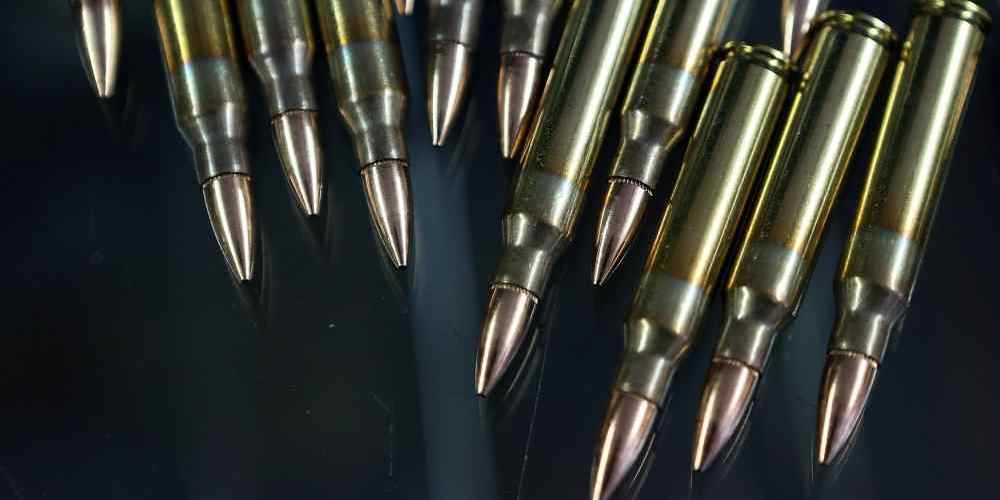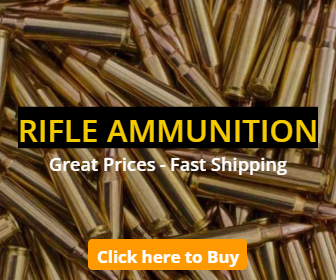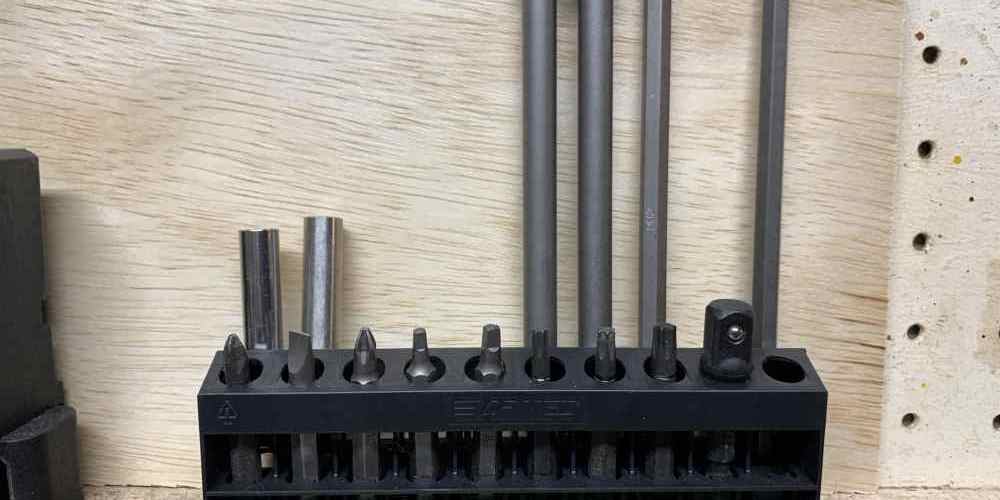“Unlock the mystery of calibers and find the perfect ammunition for your rifle.”
Understanding the Basics of Rifle Calibers
When it comes to rifles, one of the most important factors to consider is the caliber of ammunition it uses. Understanding rifle calibers can be a daunting task for beginners, but with a little knowledge, you can navigate the world of rifle ammunition types with ease.
Caliber refers to the diameter of the bullet that a rifle is designed to fire. It is typically measured in inches or millimeters, with larger numbers indicating larger bullets. The caliber of a rifle determines its power, range, and accuracy, so choosing the right caliber for your needs is crucial.
One of the most popular rifle calibers is .22LR, which stands for .22 Long Rifle. This caliber is commonly used for target shooting, plinking, and small game hunting. It is known for its low recoil and affordability, making it a great choice for beginners and experienced shooters alike.
Moving up in size, the .223 Remington is a versatile caliber that is commonly used for hunting, target shooting, and self-defense. It offers good accuracy and range, making it a popular choice among shooters of all skill levels.
For those looking for more power, the .308 Winchester is a popular choice for hunting big game such as deer and elk. It offers excellent accuracy and stopping power, making it a favorite among hunters and long-range shooters.
If you’re in the market for a rifle caliber with even more power, the .30-06 Springfield is a classic choice that has been used for hunting big game for over a century. It offers excellent range and stopping power, making it a favorite among experienced hunters.
For those looking for a caliber with extreme power and range, the .50 BMG (Browning Machine Gun) is the largest caliber commonly used in rifles. It is typically used for long-range shooting and military applications, offering unmatched power and accuracy.
When choosing a rifle caliber, it’s important to consider your intended use. If you’re planning on hunting small game or target shooting, a smaller caliber such as .22LR may be sufficient. However, if you’re hunting big game or shooting at long ranges, a larger caliber such as .308 Winchester or .30-06 Springfield may be more suitable.

It’s also important to consider factors such as recoil, ammunition availability, and cost when choosing a rifle caliber. Some calibers may be more expensive or harder to find than others, so it’s important to factor these considerations into your decision.
In conclusion, understanding rifle calibers is essential for any shooter looking to purchase a new rifle. By familiarizing yourself with the different types of rifle ammunition available, you can make an informed decision that meets your needs and preferences. Whether you’re a beginner or an experienced shooter, there is a rifle caliber out there for you. Happy shooting!
Comparing Popular Rifle Calibers for Hunting and Target Shooting
When it comes to choosing the right rifle caliber for hunting or target shooting, the options can seem overwhelming. With so many different calibers available, each with its own unique characteristics and uses, it can be difficult to know where to start. In this article, we will break down some of the most popular rifle calibers, comparing their strengths and weaknesses to help you make an informed decision.
One of the most common rifle calibers is the .223 Remington. This caliber is popular for target shooting and varmint hunting due to its flat trajectory and low recoil. The .223 Remington is also widely available and relatively inexpensive, making it a great choice for shooters on a budget. However, some hunters may find the .223 Remington to be too light for larger game, as it lacks the stopping power of larger calibers.
For those looking for a caliber with more stopping power, the .308 Winchester is a popular choice. The .308 Winchester is a versatile caliber that is suitable for a wide range of game, from deer to elk. It also has a relatively flat trajectory and manageable recoil, making it a favorite among hunters and target shooters alike. However, the .308 Winchester can be more expensive to shoot than the .223 Remington, so shooters on a budget may want to consider this before making a purchase.
Another popular caliber for hunting is the .30-06 Springfield. The .30-06 Springfield is a powerful caliber that is capable of taking down even the largest game, making it a favorite among big game hunters. However, the .30-06 Springfield has a significant amount of recoil, which may be a concern for some shooters, especially those with smaller frames. Additionally, the .30-06 Springfield can be more expensive to shoot than some other calibers, so shooters on a budget may want to consider this before making a purchase.
For those looking for a caliber with even more power, the .300 Winchester Magnum is a popular choice. The .300 Winchester Magnum is a high-powered caliber that is capable of taking down even the largest and most dangerous game. However, the .300 Winchester Magnum has a significant amount of recoil, which may be a concern for some shooters. Additionally, the .300 Winchester Magnum can be expensive to shoot, so shooters on a budget may want to consider this before making a purchase.
In conclusion, when it comes to choosing the right rifle caliber for hunting or target shooting, there are a number of factors to consider. From the .223 Remington to the .300 Winchester Magnum, each caliber has its own unique strengths and weaknesses. By comparing popular rifle calibers and considering factors such as stopping power, recoil, and cost, shooters can make an informed decision that best suits their needs and preferences. Ultimately, the best rifle caliber is the one that feels comfortable and effective in the hands of the shooter.
Exploring the Differences Between Rimfire and Centerfire Calibers
When it comes to choosing the right ammunition for your rifle, understanding the differences between rimfire and centerfire calibers is essential. Each type has its own unique characteristics and uses, so it’s important to know which one is best suited for your shooting needs.
Rimfire calibers are typically smaller in size and are commonly used for small game hunting and target shooting. They get their name from the fact that the firing pin strikes the rim of the cartridge to ignite the primer. This design allows for a simpler and less expensive manufacturing process, making rimfire ammunition a popular choice for beginners and casual shooters.
On the other hand, centerfire calibers are larger and more powerful, making them ideal for big game hunting and long-range shooting. The firing pin strikes the center of the cartridge to ignite the primer, providing a more reliable and consistent ignition compared to rimfire ammunition. While centerfire calibers are generally more expensive than rimfire calibers, they offer greater versatility and performance for experienced shooters.
When choosing between rimfire and centerfire calibers, it’s important to consider factors such as intended use, shooting distance, and personal preference. Rimfire calibers are great for plinking and target practice at shorter distances, while centerfire calibers are better suited for hunting and precision shooting at longer ranges.
In addition to rimfire and centerfire calibers, there are also different types of ammunition within each category that offer varying levels of performance and versatility. For rimfire calibers, popular options include .22 LR, .17 HMR, and .22 WMR, each with its own unique characteristics and uses. .22 LR is the most common rimfire caliber and is widely used for target shooting and small game hunting, while .17 HMR and .22 WMR offer higher velocities and better accuracy for longer range shooting.
For centerfire calibers, popular options include .308 Win, .30-06 Springfield, and .300 Win Mag, among others. These calibers are commonly used for big game hunting and long-range shooting, with each offering different levels of power and performance. .308 Win is a versatile and popular choice for a wide range of shooting applications, while .30-06 Springfield and .300 Win Mag are known for their superior long-range capabilities and stopping power.
Ultimately, the best caliber for your rifle will depend on your shooting needs and preferences. Whether you’re a beginner looking to hone your skills or an experienced shooter seeking maximum performance, there’s a caliber out there that’s perfect for you. By understanding the differences between rimfire and centerfire calibers, you can make an informed decision and enjoy a more rewarding shooting experience. So, take the time to explore the various options available and find the caliber that’s right for you. Happy shooting!
Tips for Choosing the Right Caliber for Your Shooting Needs
When it comes to choosing the right caliber for your rifle, there are a plethora of options available on the market. From .22 LR to .50 BMG, each caliber has its own unique characteristics and uses. Deciphering the differences between calibers can be overwhelming for beginners, but with a little guidance, you can find the perfect ammunition type for your shooting needs.
One of the first things to consider when selecting a caliber is the intended use of your rifle. Are you planning on hunting small game, target shooting, or long-range precision shooting? Each of these activities requires a different caliber to achieve optimal performance. For example, a .22 LR is perfect for plinking at the range or hunting small game, while a .308 Winchester is ideal for long-range shooting and big game hunting.
Another factor to consider when choosing a caliber is the recoil. Some shooters may be sensitive to recoil and prefer a lighter caliber, while others may not mind the kick of a larger caliber. It’s important to find a balance between manageable recoil and sufficient stopping power for your intended use. For beginners, starting with a smaller caliber like a .223 Remington or a .243 Winchester can help build confidence and improve accuracy.
The availability and cost of ammunition is also an important consideration when selecting a caliber. Some calibers are more popular and widely available, making it easier to find ammunition at a reasonable price. On the other hand, less common calibers may be harder to come by and more expensive. It’s important to factor in the cost of ammunition when choosing a caliber, especially if you plan on shooting frequently.
When it comes to long-range shooting, the ballistic performance of a caliber is crucial. Factors such as bullet weight, velocity, and trajectory can all impact the accuracy and effectiveness of a shot. Calibers like the .308 Winchester and 6.5 Creedmoor are known for their excellent long-range performance, making them popular choices among precision shooters.
For hunting purposes, it’s important to select a caliber that provides sufficient stopping power to ethically take down game. Calibers like the .30-06 Springfield and .300 Winchester Magnum are popular choices for big game hunting due to their high energy and penetration. It’s important to match the caliber to the size of the game you plan on hunting to ensure a clean and humane kill.
In conclusion, choosing the right caliber for your rifle is a personal decision that should be based on your shooting needs and preferences. By considering factors such as intended use, recoil, availability, cost, ballistic performance, and stopping power, you can narrow down your options and find the perfect caliber for your needs. Whether you’re a beginner or an experienced shooter, there’s a caliber out there that’s perfect for you. Happy shooting!
Debunking Common Myths About Rifle Calibers
When it comes to choosing the right rifle ammunition, there are a plethora of options available on the market. From .22 LR to .50 BMG, the variety of calibers can be overwhelming for both novice and experienced shooters alike. In this article, we will debunk some common myths about rifle calibers and help you navigate the world of ammunition to find the best fit for your shooting needs.
One of the most prevalent myths about rifle calibers is that bigger is always better. While it is true that larger calibers typically have more stopping power, they also come with drawbacks such as increased recoil and cost. For beginners or those looking to shoot for extended periods of time, a smaller caliber like .223 Remington or .308 Winchester may be a better choice. These calibers offer a good balance of power, accuracy, and affordability, making them ideal for a wide range of shooting activities.
Another common misconception is that all calibers are created equal. In reality, each caliber has its own unique characteristics that make it suitable for specific types of shooting. For example, .22 LR is a popular choice for target shooting and small game hunting due to its low recoil and affordability. On the other hand, calibers like .300 Winchester Magnum and .338 Lapua are better suited for long-range shooting and big game hunting thanks to their superior ballistics and stopping power.
Some shooters believe that caliber choice is solely based on personal preference. While it is true that individual preferences play a role in selecting the right caliber, there are also objective factors to consider. Factors such as intended use, shooting distance, and target size should all be taken into account when choosing a caliber. For example, if you plan on hunting deer at long distances, a caliber like .270 Winchester or .30-06 Springfield would be more suitable than a smaller caliber like .243 Winchester.
It is also important to dispel the myth that all calibers are interchangeable. While some rifles can be chambered in multiple calibers, it is not recommended to use ammunition that is not specifically designed for your firearm. Using the wrong caliber can result in dangerous malfunctions and damage to your rifle. Always consult your rifle’s owner’s manual or a knowledgeable gunsmith to ensure you are using the correct caliber for your firearm.
In conclusion, navigating the world of rifle calibers can be a daunting task, but with a little knowledge and research, you can find the perfect fit for your shooting needs. By debunking common myths about rifle calibers and considering factors such as intended use, shooting distance, and target size, you can make an informed decision when selecting ammunition for your rifle. Remember, there is no one-size-fits-all solution when it comes to calibers, so take the time to explore your options and find the caliber that works best for you. Happy shooting!






